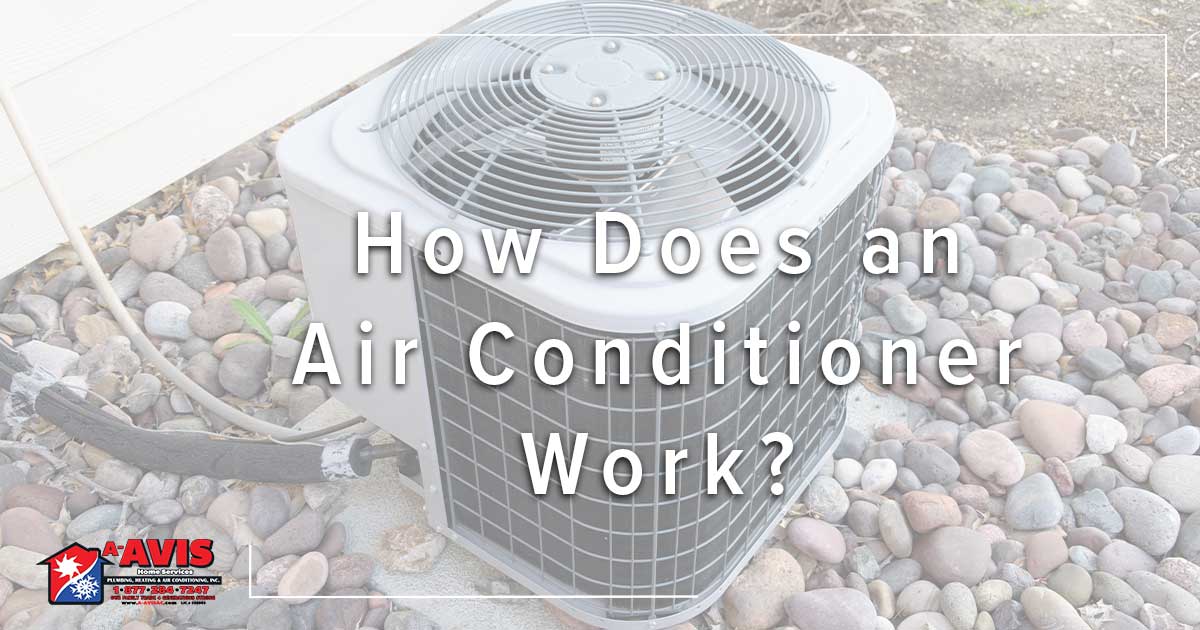The first modern air conditioner was introduced in 1902 by a young man named William Carrier. Back then, the air conditioner was used to offset humidity. Though the job has changed, the technicalities have stayed the same. For those wondering how an air conditioner works, we’re explaining everything below.
AC Basics
Carrier’s first AC system used a fan and steam coils. The steam coils were filled with cold water and the fan blew ambient air over said coils. As the air travelled over the cold coils, any excess humidity would condensate on the coils and produce nice, somewhat cool air.
While the machines look incredibly different, they way the function is essentially the same. Think of your air conditioner as a refrigerator. However, instead of a stainless steel box, the walls of your home keep the cool air in.
Key AC Parts
Every central air conditioning unit has 6 main parts. While it takes more than these key parts to make the system function at its highest level, no HVAC system could successfully do its job without these pieces.
- Thermostat – Your thermostat is the remote control of the entire HVAC system. It won’t start the cooling process until the thermostat tells it do so.
- Evaporator – The evaporator is a set of metal coils that use refrigerant to extract heat and humidity from the air.
- Blower – A blower circulates air over the evaporator and then disperses the temperature treated air through your home.
- Condenser – The condenser is another set of coils, only this set releases heat into the air outside your home.
- Compressor – Refrigerant is what pulls the heat out of air. The compressor moves refrigerant between in the indoor evaporator coils and outdoor condenser.
- Fan – The fan in the outdoor condenser has two jobs. It pulls warm outdoor air in to be treated. And it expels heat into the outdoor atmosphere.
How it All Works
The central air system is broken into two parts. One inside the house and one outside the house. Both these parts rely on refrigerant to keep your home cool.
One of the things we say a lot is that a central air system recycles air. When you turn on your HVAC system and set it to AC, the first thing it does is to pull air that’s already in your home into the HVAC system.
The warm air is pulled in by a vent and sent to your furnace. There it blows over the evaporator coil. The evaporator coil converts liquid refrigerant to gas. This refrigerant gas pulls heat and humidity from the warm air that flows over it.
After, the cool air is sent into your home. Then the refrigerant, now an incredibly hot vapor, is transported outside to the condenser. Refrigerant travels between the furnace and the condenser by way of the compressor.
As the hot vapor—full of heat and humidity from your treated air—flows from the evaporator coil to the condenser, it is exposed to the outdoor air. The ambient outdoor air pulls heat from the refrigerant, which changes the refrigerant from a vapor or gas back to a liquid.
When the refrigerant converts back to a liquid, it’s cool again and ready to repeat the process. This cycle continues until your home is at the temperature specified on your thermostat.
Types of Air Conditioners
When it comes to air conditioning options, most homeowners have a few they can choose from. We’re not here to tell you which one is best, it all depends on your individual situation. Here are the 4 most common types of air conditioners:
- Central Air Conditioning – this is the most common type of cooling system we see in Southern California. It has two units and uses the process we described above. This is the most effective system for cooling a whole home. You have the option of zoning your home and switching to heat when the season turns.
- Mini-Split System – The mini-split, or “ductless” system is found in older homes, smaller homes, hotels, or apartments. It operates the same way as central air conditioning but does not rely on ductwork for air distribution. The evaporator coil is in a single unit located inside your home.
- Window Units – The window units are small air conditioners that are installed on a windowsill. They are typically used to cool a single room or studio apartment. We don’t recommend them for larger spaces.
- Portable Air Conditioners – The portable air conditioner is similar to a window unit except it can be moved from room to room. These standalone units are usually on wheels and can be moved throughout a very small space.


